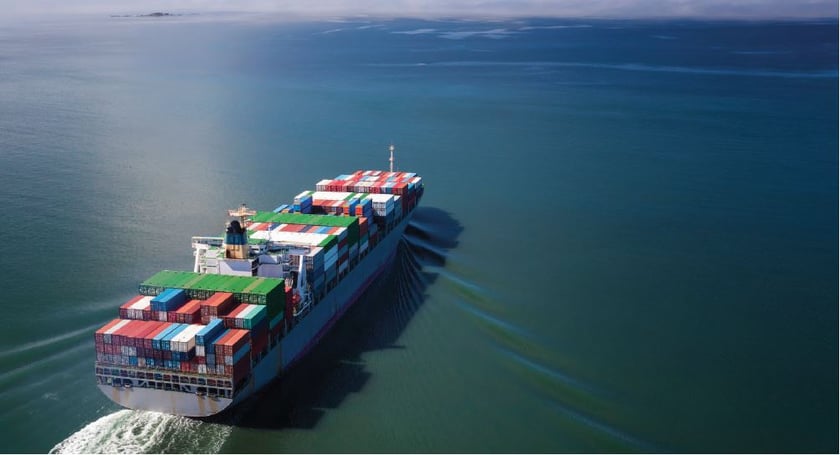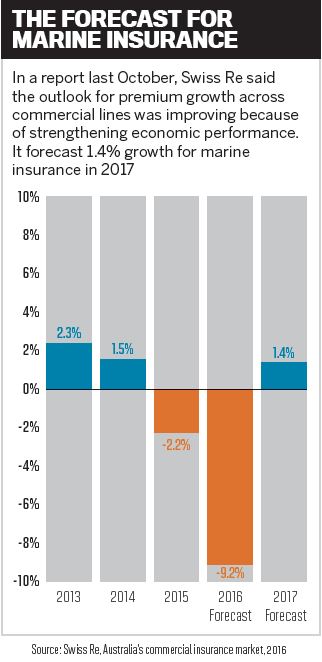The maritime industry is currently confronted by several challenges that have arisen as a consequence of the rapid development of technology and digitalisation.
“Unmanned and fully automated vessels are now expected to be in operation as early as 2018,” says Tom Hughes, XL Catlin’s head of marine, Australia.
“While it is an exciting prospect from a ship owner’s perspective with the obvious cost and efficiency benefits, this innovation brings with it a number of safety and reliability challenges that will need to be addressed before they can be passed by the relevant regulatory bodies.”
Insurers, Hughes says, will equally need to be prepared, as the prospect of a crewless ship and its on-board cargo will mean a range of new risk considerations for underwriters.
“This very issue was addressed at the latest International Union of Marine Insurance conference in Genova, who are understandably monitoring developments closely from a marine and transportation underwriting perspective,” he says.
Similarly speaking about the impact of technology on cargo exposures, Richard Grant,
Chubb’s marine manager Australia and New Zealand, notes that larger container vessels are substantially increasing accumulations on container vessels.
“The first container vessel in 1956 carried approximately 58 containers. By the 1980s, ships were carrying 3,000 to 6,000 containers. Now, we are looking at container vessels that can carry 18,000 containers,” Grant says.
“With these accumulations, brokers need to be comfortable that they are placing their business with [an insurer] with the right financial strength to deliver protection in the event of a catastrophic loss.”
Andrew Kidd, head of marine for
NTI, also comments on the use of larger capacity vessels.
“The impact of these vessels running aground, or being involved in a casualty, presents challenges for which the international salvage community does not currently have answers,” he says. “While these vessels don’t currently visit Australian shores, our customers’ cargo may end up on them.”
Kidd says the 2015 incident at Port Tianjin demonstrates the danger of port accumulations to marine insurers, with many global companies facing claims costs in the hundreds of millions of dollars.
“Even with all of our technological advancements, there is still a degree of uncertainty in measuring cargo accumulations. This is a growing concern for insurers, and also for reinsurers.”
Hughes says the industry still needs to see a greater investment in data capture and analytics.
“The global economy is, after all, dependent on seaborne trade and so improving our understanding of cargo exposure accumulation and its potential for catastrophic loss is absolutely critical,” he says.
Under the radar
Asked to name exposures in the marine cargo space that are commonly underappreciated, Grant talks about the potential exposures faced by logistics operators.
“Logistics operators may have significant professional indemnity exposures if they do not have correctly drafted operating terms and conditions dovetailed in with appropriate levels of liability and material damage coverages,” he explains.
Additionally, Grant says that clients benefit by brokers having a thorough understanding of the attachment and cessation of transit under a marine transit policy.
“This should fit in with the client’s property program to ensure there are no gaps,” he says.
“As a general rule of thumb, cover continues during the ordinary course of transit and ceases on delivery to the final destination. However, if the cargo is unloaded at any other warehouse or place of storage prior to reaching the destination, some marine covers may cease.”
Mike Davies, XL Catlin’s regional product leader for marine Asia Pacific, mentions the increasing sophistication of supply chain management and the demand for just-intime deliveries.
“As a result, other than physical loss or damage to cargo, shippers can find themselves exposed to huge consequential or financial losses as a result of late or non-delivery, or damage to the cargo following an insured loss,” he says.
Davies says that although consequential loss cover can add significantly to the cost of cargo insurance, insureds need to be aware of their exposure to additional costs, either contractually or through the need to maintain relationships with important customers.
“Consequential loss cover is particularly relevant for items critical to the continuity of a project,” Davies says.
Kidd discusses the importance of perishable commodities being insured correctly under appropriately worded policies.
“Intermediaries need to ensure they are recommending a specialist marine insurer so that policy conditions can be tailored to support the customer and the goods they are transporting,” he says.
Kidd adds that recent changes to the unfair contract terms law will impact carriers within Australia, particularly SMEs.
“Smaller carriers seeking to use written agreements – such as standard trading conditions – to totally exclude their own responsibility for damaged cargo in transit might find those contract terms are thrown out of court and, as a result, they will have to pay for cargo damage. This could mean that carriers might be left paying the bill themselves if they don’t hold appropriate [coverage].”
Talking insurance
When it comes to broker conversations with clients with a view to ascertaining their specific coverage needs, Grant’s advice is to keep the questions open and broad, in order to encourage the sharing of information.
“For cargo insurance, a good starting point is: ‘Can you take me through the various stages of transit that your goods undertake and is it clear who is responsible for loss or damage to the goods at each stage of each transit?’
“This should open up a whole range of further questions and areas the broker can address.”
Davies says: “As each client’s business and exposures can be very different, my main guidance for brokers who have limited experience in marine cargo insurance is to fi nd a specialised cargo underwriter to partner with. The underwriter will have the knowledge and expertise to highlight the exposures a client’s cargo may have during international shipments and recommend the most appropriate cargo insurance solutions.”
Similarly, Grant says brokers can benefit from dealing with an insurer that has “the prerequisite specialist knowledge to provide sound advice for clients”.
“Marine insurance is not something most brokers deal with day in day out, so partnering with a trusted marine specialist adviser plays an important role in delivering the best solutions for clients,” he says.
Hughes notes the growing trend in Australia in recent years in commoditising marine cargo products online.
“A more tailored underwriting approach remains critical for businesses whose imports, exports and domestic transits bear increasingly complex and evolving exposures,” he says. On the topic of risk mitigation, Davies says brokers should look at engaging cargo insurers that offer risk engineering services to clients.
“Marine risk engineering is an added value offered by some marine cargo insurers, and it plays a vital role in helping clients formulate their loss prevention strategies and determine the future direction of their business,” he says.
“Risk engineering can be used proactively to assess clients’ existing or new operations and tailor solutions to minimise the business exposure to a loss. It can also be used reactively after a cargo claim to identify the reason for the loss and suggest actions to prevent similar or related losses from occurring in the future.
“Clients will get insights to the industry benchmarks, best practices and loss history, empowering them to make informed decisions around their risk improvement actions and budgets.”



